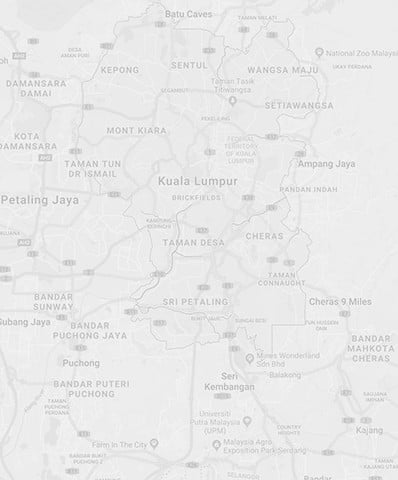To support students with self awareness and the language to identify when things are difficult we have recently started a resilience programme during tutor period. This consists of 4 weekly reviews and activities that the students are encouraged to do from this week until the end of term. In our third week we are looking at 'The Resilience Plan'.
How do people overcome challenging life events and experiences? Most people react to circumstances with a surge of negative affect and a sense of uneasiness, yet, over time, they somehow adjust and adapt. People can “bounce back” from adversity, trauma, tragedy, threats, or significant sources of stress because of their inherent resilience: “the process of, capacity for, or outcome of successful adaptation despite challenging circumstances”
The Resilience Plan (The Four S’s)
Resilience is not a trait that people either have or do not have. It involves behaviors, thoughts, and actions that can be learned and developed in anyone. One way to develop resilience is to draw on one’s learning from similar challenges in the past and remembering what he or she already knows but may have forgotten. What was it exactly that enabled a person to get through friendship issues, not making the sports team, feeling left out or struggling with being motivated. That is, what support did he/she call on, what strategies did he/she use, what sagacity did he/she hold onto, and what solutions did he/she find? These resources of resilience are also known as the 4 S’s; support, strategies, sagacity and solution.
This tool helps people unpack their resources of resilience by giving them a framework (The 4 S’s) to bring out what specifically works for them. It goes like this:
Part 1: My past sources of resilience
Step 1: Recall a recent example of resilience
Think about a time recently when you overcame a challenge or a setback in your life. Perhaps you injured yourself, or received some negative feedback at work, or had an argument with a friend or family member. Briefly describe this difficulty below.
Step 2: Identify supportive people
Which ‘people’ in your life supported you to keep standing when it would have been easier to fall? For instance, did you call an old friend or ask a teacher for advice? Perhaps a parent or grandparent gave you a pep talk. Write down who you called on for support in the top right cell of the table in Appendix A.
Step 3: Identify strategies
What ‘strategies’ did you use to help yourself cope with any negative thoughts and feelings that showed up in response to the difficulty? For example, did you go for a walk, listen to a particular song or type of music, or have a massage to release tension? Write down the strategies you used in the bottom left cell of the table in Appendix A.
Step 4: Identify sagacity
What ‘sagacity’ helped you bounce back from this difficulty? Sagacity is the wisdom and insight that you hold onto. It can come from song lyrics, novels, poetry, spiritual writings, quotes from the famous, the sayings of one’s grandparent, or learning from one’s experience. Write down your sagacity in the bottom right cell of the table in Appendix A.
Step 5: Identify solution-seeking behaviors
What solution-seeking behaviors did you display to help you actively deal with the problem? For example, did you problem-solve, seek out new information, plan, negotiate, speak up and voice your opinion, or ask others for help? Write down the solution-seeking behaviors you displayed in the top left cell of the table in Appendix A.
Part 2: My resilience plan
Step 6: Describe a current difficulty
In the space below, describe a current difficulty or challenge that you are facing.
Step 7: Apply the resilience plan to the current difficulty
Given the social supports, strategies, sagacity, and solution-seeking behaviors that helped you last time, let us look at how you could use the same or similar resources to help you bounce back from this current difficulty you are facing (identified in the previous step). Read through your completed plan (Appendix A) and write down the skills, supports, strategies, and sagacity that could work for you again in the blank resilience plan template in Appendix B. Allow some flexibility here in the sense that the same type of social support/ strategy/ sagacity/ solution-seeking behavior could be tweaked according to your current situation, for instance, going to your manager rather than a parent for support with a work-related problem. An example of a completed resilience plan is shown in Appendix C.
Step 8: Carry out your resilience plan
The next step is to put your resilience plan into action. To do this, consider the order in which you would use your different supports, strategies, sagacity, and solution-seeking behaviors: Which resource is most feasible to start with? Often the most feasible resource is the smallest step that you can take, such as calling your partner. In your resilience plan (Appendix B), place number 1 next to the first resource you will use. Then, continue to number your different resources in the order in which you would feasibly use them.
Then, start using your first resource and continue to work through your resilience plan (in order) until you have overcome this difficulty.
Once you have come through the other side, please move on to the next step.
Part 3: Evaluation
Step 9: Evaluate your resilience plan
Discuss the following:
- How was it for you to carry out your resilience plan? Did it help you bounce back from this difficulty?
- What resources (specific skills/supports/strategies/sagacity) were most helpful to you? Why?
- What resources (specific skills/supports/strategies/sagacity) were least helpful to you? Why?
- Did you not use any resources, and if so, why?
- Is there anything you would like to add to your resilience plan?
- In what other areas of your life could you use your resilience plan? How might things improve for you?
We hope that you enjoy doing these activities together and the discussion that comes along with them. Please remember that there are also additional resources available on the school counselling site to support students and families.
Author: David Slade, Vice Principal (Our Students), Secondary Campus
Next week: 'Benefit Finding'
| Week beginning | Reviews and Activities |
| 14th June | Part 1. The Resilience Scale |
| 21st June | Part 2. The Best Possible Self |
| 28th June | Part 3. The Resilience Plan |
| 5th July | Part 4. Benefit Finding |
Appendix A: My Past Sources of Resilience
Appendix B: My Resilience Plan
Appendix C: Example of a completed Resilience Plan
Difficult situation: Stuffed up a job interview and did not get the job


